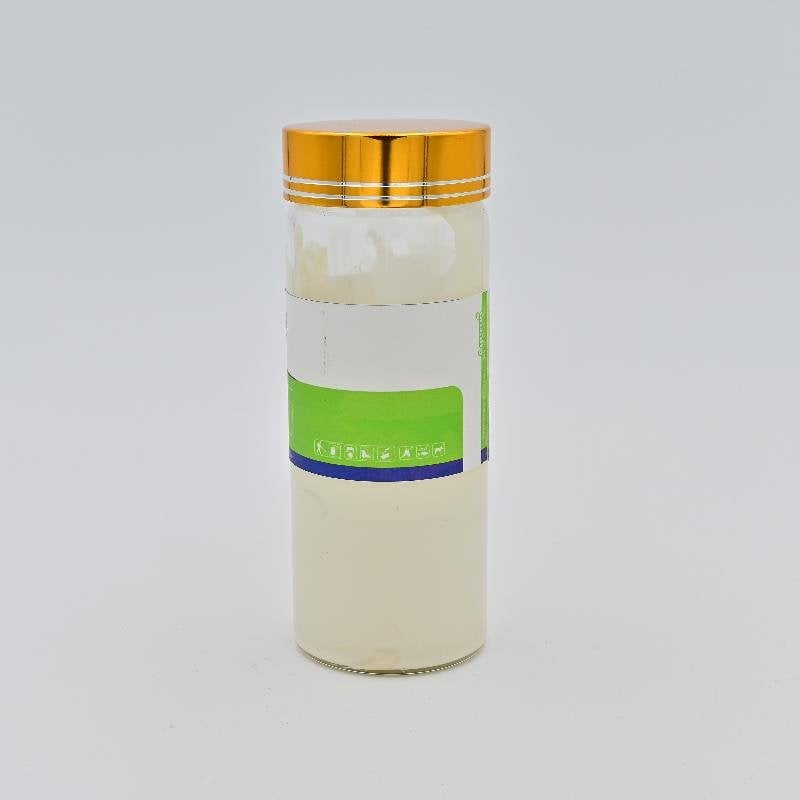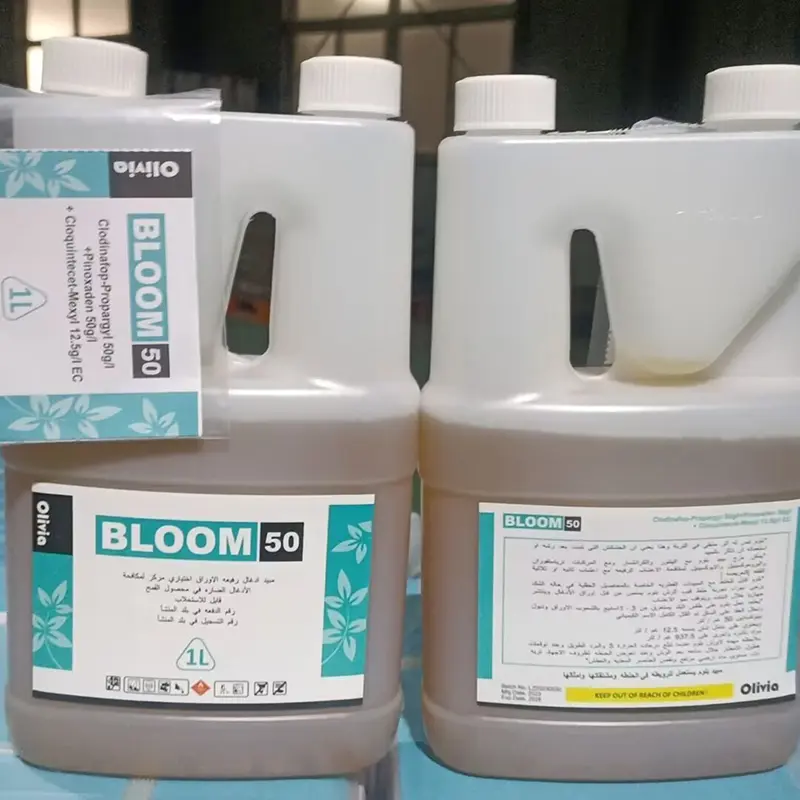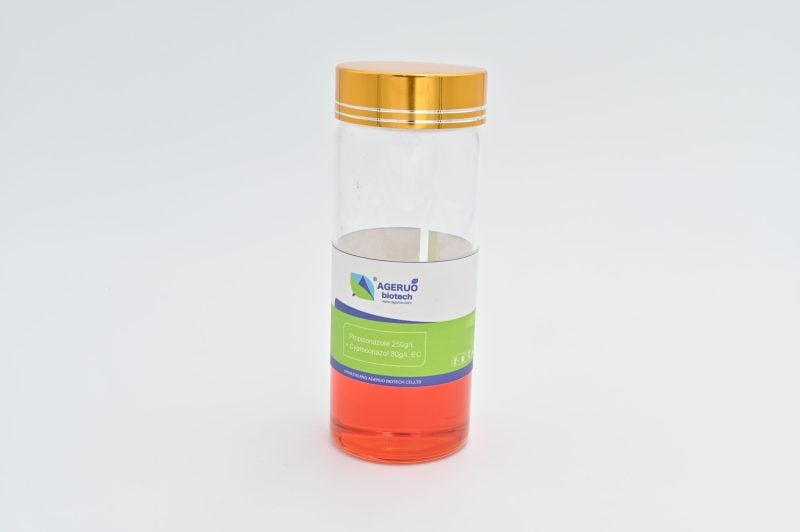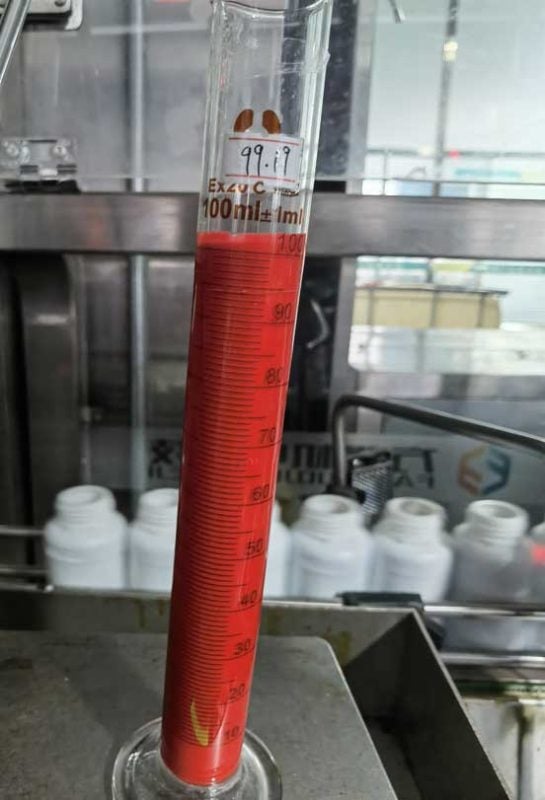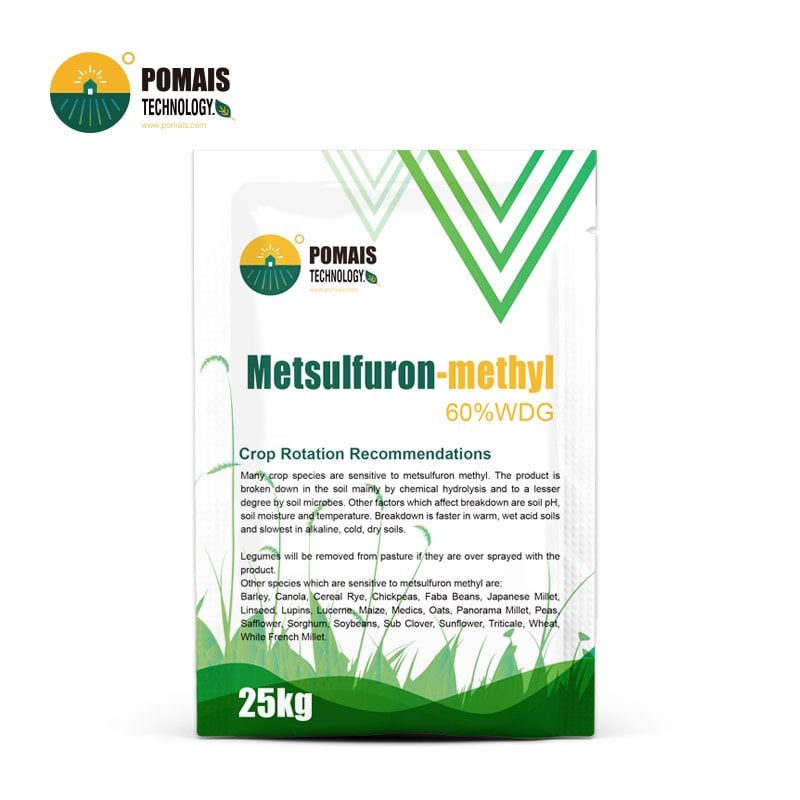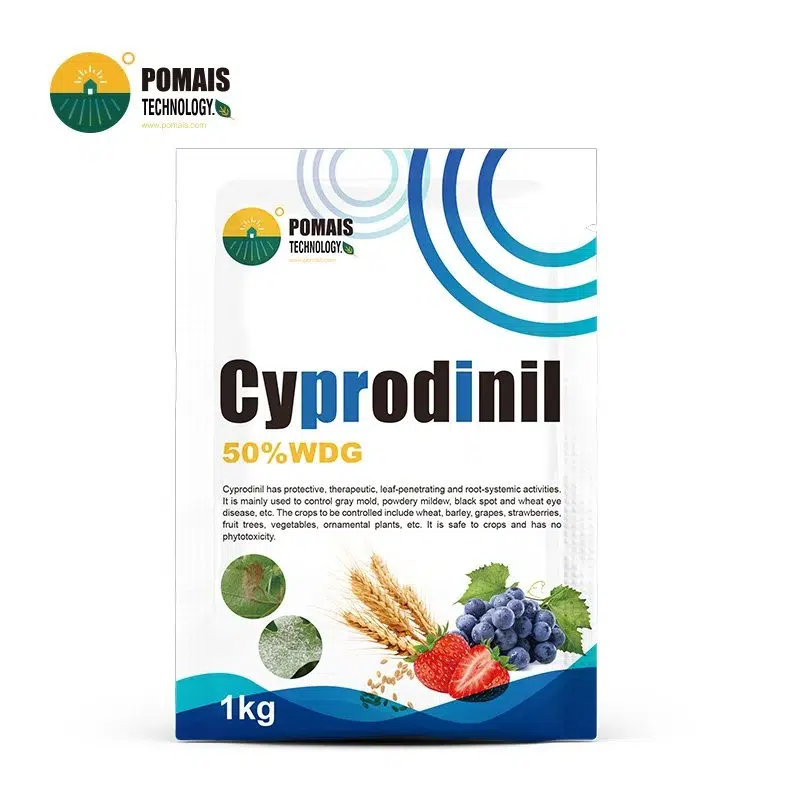Thidiazuron 120 g/L + Diuron 60 g/L SC | Cotton Defoliant
You are procuring a cotton defoliant engineered for the harvest window: Thidiazuron 120 g/L + Diuron 60 g/L SC in a 2:1 ratio. In practice, you deploy Thidiazuron 120 g/L + Diuron 60 g/L SC once upper bolls reach market maturity to accelerate leaf drop and deliver a cleaner pick with fewer leaf fragments and stains. Thidiazuron triggers abscission for active leaf shed, while the Diuron component contributes a controlled desiccation effect that improves defoliation speed and field cleanliness; together, the premix supports mechanical harvest efficiency and better lint appearance. The SC platform is formulated for stable suspension, predictable pumping, and consistent coverage across ground or aerial rigs where permitted. This product is not an insecticide or herbicide; it is purpose-built for cotton defoliation. All use conditions—crops, timing, intervals, mixing permissions, equipment restrictions, and drift buffers—are label-dependent. Use only as per the approved local label, manage drift to protect sensitive non-target crops, and ensure trained personnel handle, apply, and clean down equipment according to your SOP and SDS.
- Designed for Professional Buyers & Bulk Orders
- This product is available for business purchase and large-scale distribution.
- We support custom packaging, labeling, and formulation to meet your market needs.
- Let’s build your brand together.

About Thidiazuron 120 g/L + Diuron 60 g/L SC | Cotton Defoliant
About Thidiazuron 120 g/L + Diuron 60 g/L SC | Cotton Defoliant
| Item | Specification |
|---|---|
| Product | Thidiazuron 120 g/L + Diuron 60 g/L SC |
| Class | Cotton defoliant (2:1 premix) |
| Actives & Content | Thidiazuron 120 g/L + Diuron 60 g/L |
| Mode / Group | Thidiazuron: physiological abscission; Diuron: PSII inhibitor |
| Formulation | SC — suspension concentrate for field application |
| Intended Use Window | Pre-harvest defoliation at boll maturity (label-dependent) |
| Appearance | Flowable suspension; consistent tint for visual QA |
| Packaging | 1 L / 5 L / 20 L / 200 L (market-dependent, HDPE with tamper evidence) |
| Documents | COA / SDS / TDS supplied per lot |
| Stewardship | Treated fields require drift management and compliant buffers; trained personnel only |
| Compliance | Crops, timing, intervals, mixing permissions, and equipment allowances are label-dependent |
Mode of Action & Expected Outcome
Thidiazuron 120 g/L — physiological defoliation
- Triggers abscission zone at petioles; elevates ethylene responsiveness; reduces auxin transport
- Result: leaves detach at the base(less sticking/burning on lint)
Diuron 60 g/L — PSII-assisted clean-up
- Photosystem II inhibitor delivering controlled tissue dry-down
- Closes gaps on shaded or late leaves; accelerates yellowing and drop
What you get
- Faster, more uniform leaf shed across the canopy
- Cleaner lint(less leaf fragments/stains)
- Smoother mechanical harvest with fewer trash-related stoppages
Guardrails
- This is a defoliant, not a boll opener—coordinate with an approved opener only if label allows
- Strict drift management near sensitive crops(e.g., citrus, grapes, leafy vegetables)
- Final use is market-specific; follow label and site SOP/SDS
Program Fit & Timing
Outcome in one line: Deploy at the harvest window to accelerate clean leaf drop and align with your picking schedule—always as per the approved local label.
Readiness checks (before you schedule)
- Crop maturity: Upper-canopy bolls should be physiologically mature and included in your next picking cycle. Avoid applications on overly juvenile canopies.
- Plant condition: Aim for stable plants (not under severe drought, nutrient imbalance, or active regrowth). Excess stress can slow physiological defoliation.
- Objective clarity: Define what you need—rapid leaf removal for a single pass, or staged defoliation across blocks to match picker and gin capacity.
Timing triggers & sequencing
- Trigger: Move when your harvest plan, boll maturity, and weather window line up. This product is designed for the pre-harvest defoliation window only.
- Sequencing: If a boll opener is required, integrate it only if permitted by the label, and sequence according to label guidance and your SOPs. Avoid unapproved tank mixes or back-to-back repeats outside label allowances.
- Intervals: Respect any pre-harvest intervals and minimum retreatment gaps specified on the label.
Field and weather conditions
- Forecast: Choose a stable window; avoid conditions that drive drift or hamper physiological responses (high winds, temperature extremes, imminent heavy rain).
- Canopy & coverage: Target uniform spray coverage across shaded leaves and lower canopy where label permits. Consistency matters more than intensity.
Operations alignment
- Block staging: Defoliate in the order you intend to pick. This reduces rework and keeps lint appearance consistent across lots.
- Logistics: Coordinate with picker availability, module handling, and gin intake to convert cleaner fields into faster, higher-quality throughput.
Compliance note: All use conditions—timing, sequences, intervals, mixing permissions, and equipment restrictions—are label-dependent. Use only as per the approved local label. Manage drift to protect sensitive non-target crops, and ensure trained personnel handle application and clean-down under your SOP and SDS.
Stewardship & Drift Management
Outcome in one line: Protect lint quality while protecting neighbors—apply precisely, manage drift aggressively, and document compliance.
Non-target sensitivity
- Treat this as a cotton-only defoliant; prevent exposure to sensitive crops (e.g., citrus, grapes, leafy vegetables, ornamentals).
- Establish practical buffers to adjacent fields, shelterbelts, and waterways as required by your local label.
- Plan block layouts and boom shutoffs to avoid field edges and awkward headlands that invite overlap.
Application discipline
- Prioritize uniform coverage over intensity. Calibrate pumps, meters, and nozzles to your target spray quality per SOP.
- Manage boom height and travel speed to reduce off-target movement; keep the spray cloud inside the canopy.
- Use suitable droplet spectra for drift reduction when conditions demand it; avoid fine sprays during sensitive periods.
Weather controls
- Operate within a stable weather window: avoid strong or gusty winds, temperature inversions, and imminent heavy rainfall.
- Monitor dew points and canopy moisture; physiological defoliation performs best under stable, non-extreme temperatures.
- If conditions change mid-shift, pause and reassess rather than forcing completion.
Hygiene, clean-out, and waste
- Execute full clean-out of tanks, lines, and induction systems per your plant SOP, then verify visually before the next product.
- Capture and handle rinsates under local regulations; never discharge to drains or water bodies.
- Store product sealed, cool, and dry; segregate from fertilizers and food/feed areas. Keep pallets strapped and upright.
Worker safety & records
- Limit handling to trained personnel using PPE and controls specified on the approved local label and SDS.
- Observe REI and any signage requirements; control access to treated blocks until entry conditions are met.
- Maintain application logs (date/time, field, lot codes, equipment settings, weather, operators) for audits and traceability.
Compliance note: All parameters—buffers, compatible equipment, droplet categories, intervals, and mixing permissions—are label-dependent. Use only as per the approved local label. Manage drift proactively to protect non-target crops and habitats.
Formulation & Industrial Handling (SC)
Outcome in one line: An SC you can meter, pump, and spray consistently—built for clean coverage and predictable field performance.
Rheology & pumpability
- Shear-thinning profile supports accurate metering with diaphragm or centrifugal pumps; minimal line pressure spikes once primed.
- Controlled viscosity window (see TDS) for steady flow through induction hoppers and strainers without stringing or slugging.
- Recovers quickly after shear so patterns remain uniform across long runs.
Stability & re-dispersion
- Engineered to resist settling during storage and shift breaks; a brief pre-use agitation restores homogeneity.
- Particle-size distribution is held within spec to protect nozzles and maintain spray quality.
- Validated freeze–thaw and elevated-temperature robustness; store sealed, cool, and dry per label/SDS.
Coverage & deposition
- Wetting and dispersing system tuned for even leaf film across upper and shaded foliage.
- Low, controlled foam for reliable tank volume readings and flowmeter accuracy.
- Color/tint consistency aids visual QA on batch-to-batch uniformity (no numeric targets published here).
Equipment compatibility (as permitted by the label)
- Works on ground rigs (self-propelled, trailed) with common nozzle families; select drift-reducing spectra when conditions demand.
- For aerial operations, follow label allowances and operator SOPs for droplet category, height, and swath management.
- Use standard strainers; confirm mesh size per equipment guidance and product TDS.
Handling discipline
- Agitate before and during application; avoid prolonged idle with pumps dead-headed.
- Conduct a jar test for any new partner (adjuvant/opener) only if the label permits mixing; do not introduce non-label components.
- Execute full clean-out of tanks, lines, and filters; capture and dispose of rinsates under local regulations.
Documentation
- Each lot ships with COA / SDS / TDS detailing appearance range, density/pH windows, viscosity band, and storage guidance.
- Maintain receiving checks (seal integrity, lot codes, label correctness, COA conformance) before QA release.
Compliance note: Equipment types, nozzle categories, mixing permissions, and any aerial allowances are label-dependent. Use only as per the approved local label.
QC & Stability
Outcome in one line: Every lot is release-tested, storage-robust, and fully traceable—so you run predictable defoliation at scale.
Lot release (no public numeric limits):
- Assay (HPLC) for both actives; appearance/tint conformity
- Viscosity band & shear profile (pumpability and pattern stability)
- Suspensibility & re-dispersion after idle holds
- Wet-sieve residue & PSD integrity (nozzle protection)
- Foam tendency, pH, density (metering reliability)
Stability program:
- Accelerated & real-time studies supporting shelf life and pack compatibility
- Freeze–thaw / high-temp challenges with recovery checks
- Periodic re-tests for color/tint drift and viscosity creep
Receiving & in-process QA:
- Seal integrity, lot codes, label correctness, COA match
- Pre-shift agitation verification; mid-shift coverage checks
- Optional treated-field retains and photo logs for audit trails
Traceability & documentation:
- End-to-end lot traceability from inputs to finished packs
- COA / SDS / TDS supplied per lot; retention samples archived
Compliance note: Storage, transport, and disposal follow SDS and local regulations. Use only as per the approved local label.
OEM & Compliance
Outcome in one line: Private-label ready—brand-aligned artwork with regulatory fidelity, from bottle to pallet.
Private label & artwork:
- Multilingual labels (EN/ES/FR/AR/RU/PT, etc.), serialization/barcodes, optional QR e-leaflet
- Brand colors/typography aligned while preserving mandatory hazard and stewardship phrases
Packaging configuration:
- HDPE 1 L / 5 L / 20 L / 200 L with induction seal and tamper evidence
- Export-grade cartons, pallet patterns optimized for container utilization
- Consistent tint standard to support visual QA in the field
Regulatory alignment:
- All claims, timing, intervals, mixing permissions, aerial allowances are label-dependent
- Drift buffers, signage, REI, and transport marks implemented to local rules
- Only trained personnel handle and apply; keep usage within the approved local label
Deliverables:
- Editable label/carton dielines, print-ready PDFs
- Master data (SKU codes, dimensions, net/gross weights) for ERP onboarding
FAQ
Q1. When should you schedule defoliation?
At the harvest window when upper bolls are mature and included in your next picking pass—always per the approved local label.
Q2. Is this a boll opener?
No. It is a defoliant. If an opener is required, integrate one only if the label permits, and follow sequencing rules.
Q3. What about sensitive neighboring crops?
Manage drift aggressively. Establish buffers, choose suitable droplet spectra, and operate within stable weather windows.
Q4. Can you tank mix with other products?
Only as permitted by the approved local label. Run a jar test and follow your SOP for order of addition and clean-out.
Q5. How do you verify product quality on receipt?
Check tamper evidence and labels, confirm lot codes, and match the COA. Agitate before use and log field coverage checks.
Q6. What documents are provided?
Each lot includes COA / SDS / TDS; artwork files and packaging specs are available for OEM programs.
Request the specification pack for Thidiazuron 120 g/L + Diuron 60 g/L SC (2:1)—COA/SDS/TDS templates, stability summary, label/carton mockups, and a packaging proposal.
To accelerate quoting, share: target markets, harvest window, label languages, preferred pack sizes, annual forecast, and any stewardship wording required. We will confirm MOQ, lead time, palletization, and artwork timelines—always finalized against your approved local label.
| Item | Specification |
|---|---|
| Product | Thidiazuron 120 g/L + Diuron 60 g/L SC |
| Class | Cotton defoliant (2:1 premix) |
| Actives & Content | Thidiazuron 120 g/L + Diuron 60 g/L |
| Mode / Group | Thidiazuron: physiological abscission; Diuron: PSII inhibitor |
| Formulation | SC — suspension concentrate for field application |
| Intended Use Window | Pre-harvest defoliation at boll maturity (label-dependent) |
| Appearance | Flowable suspension; consistent tint for visual QA |
| Packaging | 1 L / 5 L / 20 L / 200 L (market-dependent, HDPE with tamper evidence) |
| Documents | COA / SDS / TDS supplied per lot |
| Stewardship | Treated fields require drift management and compliant buffers; trained personnel only |
| Compliance | Crops, timing, intervals, mixing permissions, and equipment allowances are label-dependent |
Mode of Action & Expected Outcome
Thidiazuron 120 g/L — physiological defoliation
- Triggers abscission zone at petioles; elevates ethylene responsiveness; reduces auxin transport
- Result: leaves detach at the base(less sticking/burning on lint)
Diuron 60 g/L — PSII-assisted clean-up
- Photosystem II inhibitor delivering controlled tissue dry-down
- Closes gaps on shaded or late leaves; accelerates yellowing and drop
What you get
- Faster, more uniform leaf shed across the canopy
- Cleaner lint(less leaf fragments/stains)
- Smoother mechanical harvest with fewer trash-related stoppages
Guardrails
- This is a defoliant, not a boll opener—coordinate with an approved opener only if label allows
- Strict drift management near sensitive crops(e.g., citrus, grapes, leafy vegetables)
- Final use is market-specific; follow label and site SOP/SDS
Program Fit & Timing
Outcome in one line: Deploy at the harvest window to accelerate clean leaf drop and align with your picking schedule—always as per the approved local label.
Readiness checks (before you schedule)
- Crop maturity: Upper-canopy bolls should be physiologically mature and included in your next picking cycle. Avoid applications on overly juvenile canopies.
- Plant condition: Aim for stable plants (not under severe drought, nutrient imbalance, or active regrowth). Excess stress can slow physiological defoliation.
- Objective clarity: Define what you need—rapid leaf removal for a single pass, or staged defoliation across blocks to match picker and gin capacity.
Timing triggers & sequencing
- Trigger: Move when your harvest plan, boll maturity, and weather window line up. This product is designed for the pre-harvest defoliation window only.
- Sequencing: If a boll opener is required, integrate it only if permitted by the label, and sequence according to label guidance and your SOPs. Avoid unapproved tank mixes or back-to-back repeats outside label allowances.
- Intervals: Respect any pre-harvest intervals and minimum retreatment gaps specified on the label.
Field and weather conditions
- Forecast: Choose a stable window; avoid conditions that drive drift or hamper physiological responses (high winds, temperature extremes, imminent heavy rain).
- Canopy & coverage: Target uniform spray coverage across shaded leaves and lower canopy where label permits. Consistency matters more than intensity.
Operations alignment
- Block staging: Defoliate in the order you intend to pick. This reduces rework and keeps lint appearance consistent across lots.
- Logistics: Coordinate with picker availability, module handling, and gin intake to convert cleaner fields into faster, higher-quality throughput.
Compliance note: All use conditions—timing, sequences, intervals, mixing permissions, and equipment restrictions—are label-dependent. Use only as per the approved local label. Manage drift to protect sensitive non-target crops, and ensure trained personnel handle application and clean-down under your SOP and SDS.
Stewardship & Drift Management
Outcome in one line: Protect lint quality while protecting neighbors—apply precisely, manage drift aggressively, and document compliance.
Non-target sensitivity
- Treat this as a cotton-only defoliant; prevent exposure to sensitive crops (e.g., citrus, grapes, leafy vegetables, ornamentals).
- Establish practical buffers to adjacent fields, shelterbelts, and waterways as required by your local label.
- Plan block layouts and boom shutoffs to avoid field edges and awkward headlands that invite overlap.
Application discipline
- Prioritize uniform coverage over intensity. Calibrate pumps, meters, and nozzles to your target spray quality per SOP.
- Manage boom height and travel speed to reduce off-target movement; keep the spray cloud inside the canopy.
- Use suitable droplet spectra for drift reduction when conditions demand it; avoid fine sprays during sensitive periods.
Weather controls
- Operate within a stable weather window: avoid strong or gusty winds, temperature inversions, and imminent heavy rainfall.
- Monitor dew points and canopy moisture; physiological defoliation performs best under stable, non-extreme temperatures.
- If conditions change mid-shift, pause and reassess rather than forcing completion.
Hygiene, clean-out, and waste
- Execute full clean-out of tanks, lines, and induction systems per your plant SOP, then verify visually before the next product.
- Capture and handle rinsates under local regulations; never discharge to drains or water bodies.
- Store product sealed, cool, and dry; segregate from fertilizers and food/feed areas. Keep pallets strapped and upright.
Worker safety & records
- Limit handling to trained personnel using PPE and controls specified on the approved local label and SDS.
- Observe REI and any signage requirements; control access to treated blocks until entry conditions are met.
- Maintain application logs (date/time, field, lot codes, equipment settings, weather, operators) for audits and traceability.
Compliance note: All parameters—buffers, compatible equipment, droplet categories, intervals, and mixing permissions—are label-dependent. Use only as per the approved local label. Manage drift proactively to protect non-target crops and habitats.
Formulation & Industrial Handling (SC)
Outcome in one line: An SC you can meter, pump, and spray consistently—built for clean coverage and predictable field performance.
Rheology & pumpability
- Shear-thinning profile supports accurate metering with diaphragm or centrifugal pumps; minimal line pressure spikes once primed.
- Controlled viscosity window (see TDS) for steady flow through induction hoppers and strainers without stringing or slugging.
- Recovers quickly after shear so patterns remain uniform across long runs.
Stability & re-dispersion
- Engineered to resist settling during storage and shift breaks; a brief pre-use agitation restores homogeneity.
- Particle-size distribution is held within spec to protect nozzles and maintain spray quality.
- Validated freeze–thaw and elevated-temperature robustness; store sealed, cool, and dry per label/SDS.
Coverage & deposition
- Wetting and dispersing system tuned for even leaf film across upper and shaded foliage.
- Low, controlled foam for reliable tank volume readings and flowmeter accuracy.
- Color/tint consistency aids visual QA on batch-to-batch uniformity (no numeric targets published here).
Equipment compatibility (as permitted by the label)
- Works on ground rigs (self-propelled, trailed) with common nozzle families; select drift-reducing spectra when conditions demand.
- For aerial operations, follow label allowances and operator SOPs for droplet category, height, and swath management.
- Use standard strainers; confirm mesh size per equipment guidance and product TDS.
Handling discipline
- Agitate before and during application; avoid prolonged idle with pumps dead-headed.
- Conduct a jar test for any new partner (adjuvant/opener) only if the label permits mixing; do not introduce non-label components.
- Execute full clean-out of tanks, lines, and filters; capture and dispose of rinsates under local regulations.
Documentation
- Each lot ships with COA / SDS / TDS detailing appearance range, density/pH windows, viscosity band, and storage guidance.
- Maintain receiving checks (seal integrity, lot codes, label correctness, COA conformance) before QA release.
Compliance note: Equipment types, nozzle categories, mixing permissions, and any aerial allowances are label-dependent. Use only as per the approved local label.
QC & Stability
Outcome in one line: Every lot is release-tested, storage-robust, and fully traceable—so you run predictable defoliation at scale.
Lot release (no public numeric limits):
- Assay (HPLC) for both actives; appearance/tint conformity
- Viscosity band & shear profile (pumpability and pattern stability)
- Suspensibility & re-dispersion after idle holds
- Wet-sieve residue & PSD integrity (nozzle protection)
- Foam tendency, pH, density (metering reliability)
Stability program:
- Accelerated & real-time studies supporting shelf life and pack compatibility
- Freeze–thaw / high-temp challenges with recovery checks
- Periodic re-tests for color/tint drift and viscosity creep
Receiving & in-process QA:
- Seal integrity, lot codes, label correctness, COA match
- Pre-shift agitation verification; mid-shift coverage checks
- Optional treated-field retains and photo logs for audit trails
Traceability & documentation:
- End-to-end lot traceability from inputs to finished packs
- COA / SDS / TDS supplied per lot; retention samples archived
Compliance note: Storage, transport, and disposal follow SDS and local regulations. Use only as per the approved local label.
OEM & Compliance
Outcome in one line: Private-label ready—brand-aligned artwork with regulatory fidelity, from bottle to pallet.
Private label & artwork:
- Multilingual labels (EN/ES/FR/AR/RU/PT, etc.), serialization/barcodes, optional QR e-leaflet
- Brand colors/typography aligned while preserving mandatory hazard and stewardship phrases
Packaging configuration:
- HDPE 1 L / 5 L / 20 L / 200 L with induction seal and tamper evidence
- Export-grade cartons, pallet patterns optimized for container utilization
- Consistent tint standard to support visual QA in the field
Regulatory alignment:
- All claims, timing, intervals, mixing permissions, aerial allowances are label-dependent
- Drift buffers, signage, REI, and transport marks implemented to local rules
- Only trained personnel handle and apply; keep usage within the approved local label
Deliverables:
- Editable label/carton dielines, print-ready PDFs
- Master data (SKU codes, dimensions, net/gross weights) for ERP onboarding
FAQ
Q1. When should you schedule defoliation?
At the harvest window when upper bolls are mature and included in your next picking pass—always per the approved local label.
Q2. Is this a boll opener?
No. It is a defoliant. If an opener is required, integrate one only if the label permits, and follow sequencing rules.
Q3. What about sensitive neighboring crops?
Manage drift aggressively. Establish buffers, choose suitable droplet spectra, and operate within stable weather windows.
Q4. Can you tank mix with other products?
Only as permitted by the approved local label. Run a jar test and follow your SOP for order of addition and clean-out.
Q5. How do you verify product quality on receipt?
Check tamper evidence and labels, confirm lot codes, and match the COA. Agitate before use and log field coverage checks.
Q6. What documents are provided?
Each lot includes COA / SDS / TDS; artwork files and packaging specs are available for OEM programs.
Request the specification pack for Thidiazuron 120 g/L + Diuron 60 g/L SC (2:1)—COA/SDS/TDS templates, stability summary, label/carton mockups, and a packaging proposal.
To accelerate quoting, share: target markets, harvest window, label languages, preferred pack sizes, annual forecast, and any stewardship wording required. We will confirm MOQ, lead time, palletization, and artwork timelines—always finalized against your approved local label.
Related Products
Latest News

